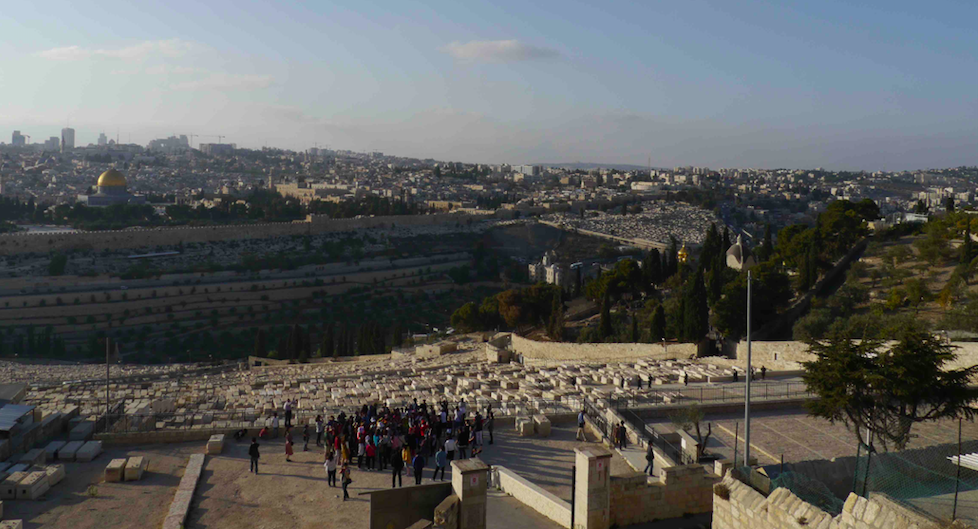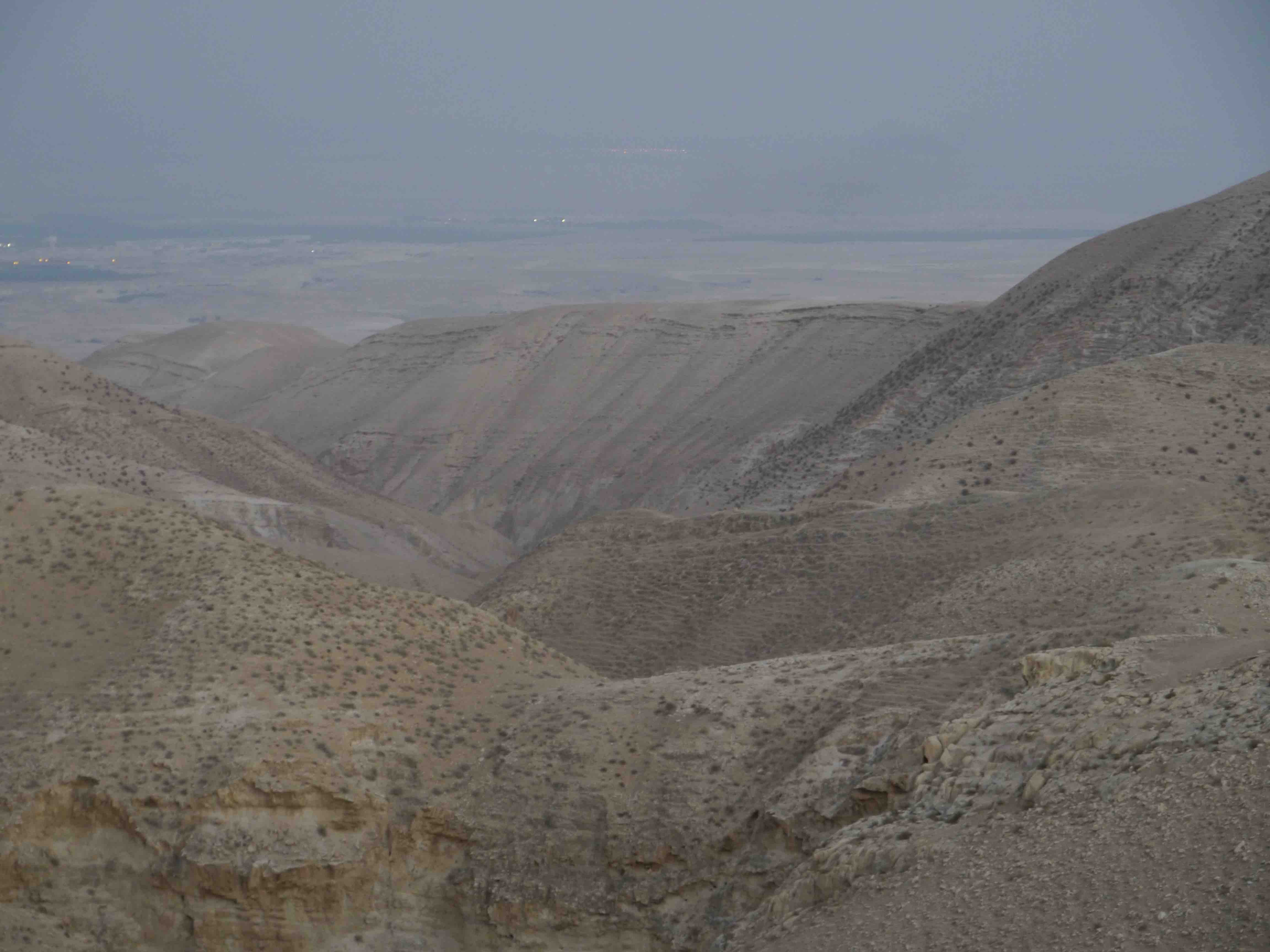Seeing Jesus through Palestinian eyes
Sunday, 4 June 2017
| Nils von Kalm

Fayad is nine years old and receives speech therapy at the Spafford Children’s Center in East Jerusalem.
In his short life he has lived through three wars, has endured harassment from Israeli soldiers carrying assault rifles and lives each day with an anxiety most of us cannot imagine. The speech therapy he is undertaking is to cure a debilitating stutter that threatens to socially isolate him even more.
Fayad is typical of an increasing number of Palestinian children presenting with mental and behavioural problems brought about by the ongoing conflict between Israel and Palestine. The Spafford Children’s Center conducts play, art, speech and drama therapy to help heal the trauma suffered by these children.
I am fortunate enough to work for an aid and development organisation that takes me to places where I get to see the kingdom of God at work in dramatic ways. So when I learned last year that my job would take me to visit some of our projects in the Holy Land, I jumped at the chance to take some time to see the sights and people for myself before I had to get into the work part of my trip. I had been waiting for this opportunity for years and I wasn’t going to let it go to waste.
Many (if not most) Holy Land tours take you to the biblical sights but don’t put you in touch with the plight of the type of people that Jesus spent most of his time with. So I was determined to spend time with some Palestinian people and get the history of the region from their point of view.
My prayer was answered one unforgettable day when, in the cool of the late afternoon, I made my way down to the Garden of Gethsemane at the foot of the Mount of Olives. I had been feeling physically unwell for a few days, and, while many people walk to the top of the Mount of Olives, the way is quite steep. As I stood at the bottom wondering what to do, I heard a horde of taxi drivers behind me shouting out their offers to take me to the top for a good price.
My natural reaction to such offers is to be very wary, but my physical condition told me that, if I wanted to see what I had come halfway across the world for, I needed to take up this offer. I thank God that I did.
My driver’s name was Hassim. He is a Palestinian Christian with a wife and 11 children. My prayer to get to know some Palestinian Christians had been answered, and typical of God’s generosity, in a way that was better than what I had asked for. I had Hassim to myself for the next few hours and I could ask him anything I liked about the area from his perspective.
As we snaked up the windy roads of this ancient and famous mount, Hassim told me about the history of where we were going. We stopped halfway up, at the place where Jesus is said to have wept over Jerusalem. Getting out of the car, it wasn’t that difficult to imagine Jesus agonising over the city for stoning the prophets and not recognising the things that make for peace. You are faced with a spectacular view of the whole city, with the Western wall of the old temple in the foreground and the gates of the city easily visible.
A little bit further along we came to the place along which Jesus rode into Jerusalem on a donkey on Palm Sunday. As I took in these sights, I was struck by the ‘earthiness’ of Jesus and the life He and His disciples lived all those centuries ago. To ride into the famous city, occupied by a hostile foreign power, on a donkey of all creatures, says it all to me of the kind of messiah Jesus claimed to be. Normally, a conquering king would ride into the city on a stallion, the crowds roaring their adulation. But Jesus, humbly showing what true greatness is, rides in on an ass.
The top of the Mount of Olives is another sight in itself. What stands out is the enormous cemetery with coffins sitting atop the ground. There are literally hundreds of them. People are so keen to be buried there, because they believe that the Mount of Olives is the place where Jesus will return and they want to be the first to be raised when he does!
As I was about to get back into the car after taking in the distant sights, Hassim said that for a bit more money he could take me to Bethany where Jesus raised Lazarus and where Martha and Mary had lived, and, following that, along the Jericho road to Jericho itself. Again, my first thought was to decline the offer and get back to my hotel room. Then sanity set in as I remembered where I was and that this wasn’t a place you get to visit every day.
So we drove into the West Bank to Bethany, and then along part of the road to Jericho. This was also the possible place of Jesus’ temptation in the wilderness, and again, it is easy to see why. There is dirt and dust and rocks and nothing else. The temptation to turn the stones into bread after 40 days of fasting would be overpowering.
The Jericho road is also of course the setting for the parable of the Good Samaritan. It is also pretty easy to see how a traveller could be beaten up here and that no one would know. It makes the action of the Samaritan even more noble; that he cared for the beaten man without anyone knowing about his good actions. When you give to the needy, do not let your left hand know what your right hand is doing. The offense this statement of Jesus would have caused is amplified when you realise that He highlights that it is done by a hated foreigner. And having the story relayed to me by a Palestinian made it even more powerful.
This is what it is like in the land of the Bible. You are struck by the earthiness and ordinariness of the stories as they come to life.
I then went into Gaza. As we were driven in, I saw a sign calling for Gaza to be made liveable again. Coming from Melbourne, last year voted the world’s most liveable city for the sixth year in a row, I wondered if Gaza might have been vying for similar recognition. The naivety of privilege sometimes knows no bounds. What the sign was referring to was the fact that, if current conditions in Gaza persist, it could be uninhabitable by 2020. That is three years away.
Gaza is the third most densely populated region in the world. Unemployment sits at 41 per cent, electricity is available for only about six hours per day, and water, when it is drinkable, is scarce. On top of that, Israel controls the air and maritime space as well as the electricity and water. Gaza is the world’s largest open-air prison.
The vast majority of people in Gaza and East Jerusalem, like the vast majority of Israelis, just want to live in peace. They just want to live a normal life like most of us live in Australia. But their current reality is different.
The light of love shines brightest when circumstances are at their darkest. For Palestinian children, it doesn’t get much darker than what they have to go through each day. What I saw in the eyes of children like Fayad and in beautiful men like Hassim was the image of Christ. It was an image of suffering love. In a land of conflict, it was the suffering love of the Prince of Peace who walked those dusty roads that impacted me the most. It is a love to which I give my life.
Nils von Kalm is a freelance writer. He works in church and community engagement with Anglican Overseas Aid in Melbourne, and previously spent 14 years with World Vision. He can be found on Facebook at https://www.facebook.com/nils.vonkalm and at http://soulthoughts.com.
Photo credits: Nils von Kalm
Via Dolorosa with Israeli soldiers; Jerusalem from the Mount of Olives; Gaza; Jericho from the Jericho Road.

